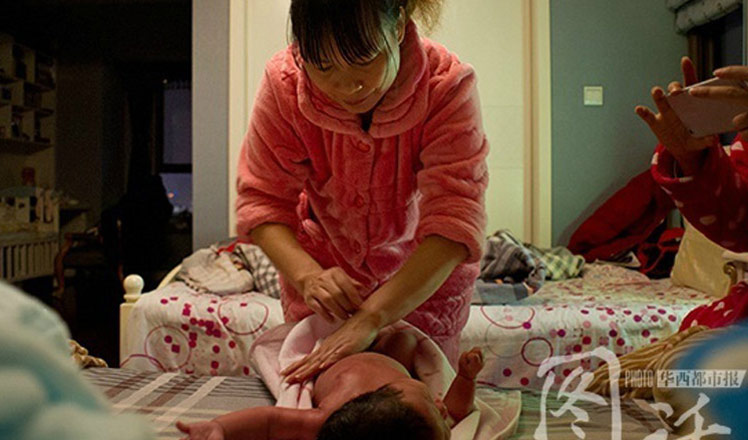Putting the legal ball in a new court
Updated: 2016-02-24 08:04
By Cao Yin(China Daily)
|
||||||||
|
A man applies to file a case with a clerk at the First Circuit Court of the Supreme People's Court in Shenzhen, Guangdong province, on Feb 2, 2015. Mao Siqian / Xinhua |
Going to the grassroots
From her position as a chief judge, Gao has enjoyed a bird's-eye view of the changes.
At the Supreme People's Court, judges often rule on appeals of verdicts handed down by provincial high people's courts. But most of their work revolves around deciding whether there are legal grounds for retrials of cases that have already been reviewed twice in the lower courts.
Gao said that before the establishment of the circuit courts, she and her peers often worked on verdicts or retrial decisions in their offices in Beijing. They based their judgments on materials and case documents submitted by the lower courts. The result was that they had little or no contact with the litigants themselves, so they knew almost nothing about their personal circumstances.
Now, through her work with the First Circuit Court, Gao visits litigants in their homes, workplaces or other locations and conducts face-to-face talks to resolve conflicts or petitions in person.
"Last year, I went to Hechi and Baise in the Guangxi Zhuang autonomous region to resolve disputes at litigants' homes," she said. "In the past, most judgments I made were based on materials provided by lower courts, so I never actually met the people involved."
In Hechi, which is rich in nonferrous metals, she helped resolve a contractual dispute between two partners in a mining company. "If I hadn't gone there, I would never have really understood the nature of the dispute, because I had no idea about the technical terms and how local enterprises operate. However, when I visited the city and spoke with the people involved, I quickly understood the situation," she said.
Last year, Gao's colleague, Gong Bangyou, traveled to Wuzhi Mountain, Hainan province, and resolved a 20-year-long dispute over home ownership. The local court had pronounced a verdict many years before, but the plaintiff claimed the decision was flawed. His repeated pleas fell on deaf ears, so when the First Circuit Court was established he lost no time in making contact.
"I received a petition from a villager in Hainan, who pointed out mistakes in the original verdict. My visit allowed me to confirm that he was right," Gong said. "The local lower court had refused to retry the case and repeatedly ignored the petitioner, which was why the dispute lasted so long. I was shocked by the man's shabby home in the mountains, and realized that the case needed to be concluded as quickly as possible. I arranged a meeting with the 15 people involved in the dispute, and after four hours of mediation we came to a solution.
"If I had been in Beijing, I wouldn't have known how serious the villager's problem was. Helping people is one of the best things about the job, and I got a sense of achievement from working on the case," he said.
Qi Su, a judge at the Second Circuit Court in Shenyang, said the court improved efficiency by arranging hearings at the homes of 195 litigants last year, and also ruled on a large number of petitions.
Official statistics show that last year the two circuit courts dealt with 1,774 cases, and ruled on more than 40,000 petitions that would have previously been submitted to the Supreme People's Court in Beijing. The court in Shenzhen dealt with 10,769 petitioners, while its counterpart in Shenyang handled more than 33,000.
"The court gates were flooded by more than 1,000 petitioners on our first day in operation, but the number had fallen to about 100 per day by December," Qi said, adding that the courts help petitioners avoid the need to travel to Beijing repeatedly to lodge appeals.

 Matters of state
Matters of state
 Students begin new term with lucky bags and red envelopes
Students begin new term with lucky bags and red envelopes
 The life of a postpartum care worker
The life of a postpartum care worker
 Top 10 most Internet-savvy banks in China
Top 10 most Internet-savvy banks in China
 To eat or not to eat? Delicious and adorable art
To eat or not to eat? Delicious and adorable art
 12 photos you don't want to miss about Chinese Lantern Festival
12 photos you don't want to miss about Chinese Lantern Festival
 The world in photos: Feb 15 - 21
The world in photos: Feb 15 - 21
 China Daily weekly pictures: Feb 13-19
China Daily weekly pictures: Feb 13-19
Most Viewed
Editor's Picks

|

|

|

|

|

|
Today's Top News
What ends Jeb Bush's White House hopes
Investigation for Nicolas's campaign
Will US-ASEAN meeting be good for region?
Accentuate the positive in Sino-US relations
Dangerous games on peninsula will have no winner
National Art Museum showing 400 puppets in new exhibition
Finest Chinese porcelains expected to fetch over $28 million
Monkey portraits by Chinese ink painting masters
US Weekly

|

|









